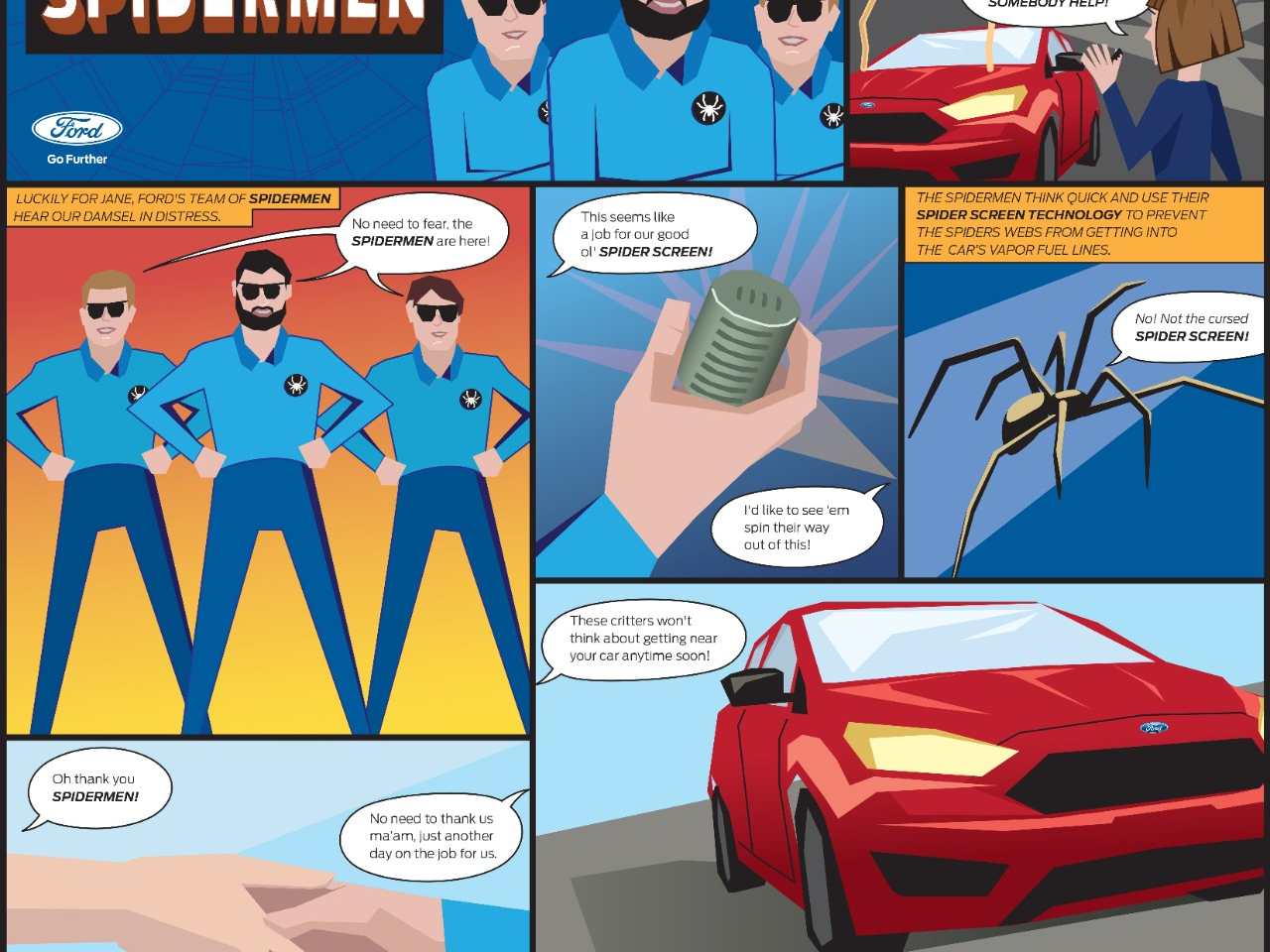
- Ford engineers developed an innovative spider screen to keep the creepy crawlers from nesting inside vehicles
- Screen prevents spiders from building cocoon-like webs dense enough to potentially block fuel vapor lines, which can damage engines and diminish vehicle performance
- Now, an updated version of the spider screen is being implemented in Ford vehicles in North America; it will go global with launch of the all-new 2016 Ford Focus RS
You’re welcome.
Cheiracanthium mildei and Cheiracanthium inclusum – more commonly referred to as yellow sac spiders – have been known to nest inside vehicles in North America, causing problems for car owners and automakers alike over the years. Instead of using webs to catch prey, these spiders build cocoon-like webs for shelter and to lay eggs. Their home is dense enough to potentially block fuel vapor lines, which can lead to engine damage and diminished vehicle performance.
David Gimby, Ford fuel systems engineer, began looking into how to keep spiders out of Ford vehicles back in 1999. Having no background in arachnology, he researched the life and science of spiders and in 2004 Ford produced its first spider screen, which has kept spiders from nesting inside Ford vehicles for years.
“These particular Arachnids are not sedentary – they are hunters and constantly roaming,” Gimby explained. “When it’s time to build a birthing cocoon or an over-winter cocoon, they seek a cavity or a depression, like a fuel vapor line opening, which allows them to maximize the use of their silk.”
“Spiders can be a nuisance for our vehicle owners,” said Gimby. “We studied these species to discern how they nest, then designed an effective device for excluding the larger, problematic spiders from nesting in our cars.”
The technology continues to evolve. Ford engineers worked on an improved spider screen that is being implemented across the Ford lineup in North America. It will go global with the launch of the all-new 2016 Ford Focus RS.
Keeping fuel vapor lines clear is key to air and vapor circulation for a vehicle’s carbon canister, where fuel vapors are captured so they don’t enter the environment. The Ford-developed spider screen keeps spiders out of the line, but allows air and vapor flow for optimal vehicle operation.
“We are constantly improving and adapting, even when it comes to technologies that are already working,” said William Euliss, Ford fuel systems engineer. “There is a significant amount of engineering that goes into every detail of our vehicles, like the spider screen.”

No comments:
Post a Comment